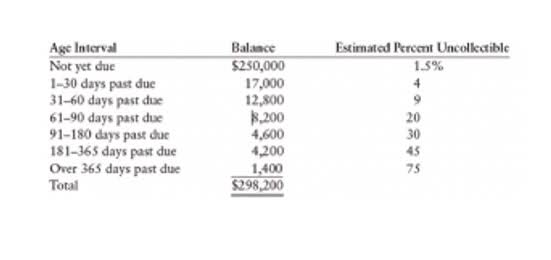
However, there are certain aspects that differentiate the two terms that you have to know how to identify. Both the concept of liquidity as well as solvency reflect a company’s ability to pay. You should not neglect any of these aspects if you want to prevent your company from incurring serious financial problems.
Calculate the approximate cash flow generated by business by adding the after-tax business income to all the non-cash expenses. If you’re trading stocks or investments after hours, there may be fewer market participants. Also, if you’re trading an overseas instrument like currencies, liquidity might be less for the euro during, for example, Asian trading hours. As a result, the bid-offer-spread might be much wider than had you traded the euro during European trading hours. Coins, stamps, art and other collectibles are less liquid than cash if the investor wants full value for the items.
As a result, you have to be sure to monitor the liquidity of a stock, mutual fund, security or financial market before entering a position. Liquidity is important in financial markets as it ensures trades and orders can be executed appropriately. Within financial markets, buyers and sellers are often paired based on market orders and pending book orders. If a specific security has no liquidity, markets cannot execute trades, security holders can not sell their assets, and parties interested in investing in the security can not buy the asset. For financial markets, liquidity represents how easily an asset can be traded.
Many companies have negative shareholders’ equity, which is a sign of insolvency. Liquidity refers to how easily or efficiently cash can be obtained to pay bills and other short-term obligations. Assets that can be readily sold, like stocks and bonds, are also considered to be liquid (although cash is, of course, the most liquid asset of all). Note that in our example, we will assume that current liabilities only consist of accounts payable and other liabilities, with no short-term debt. Both types of ratios are essential for assessing different dimensions of a company’s financial performance and risk profile.
Solvency ratios indicate a company’s financial health in the context of its debt obligations. As you might imagine, there are a number of different ways to measure financial health. We define liquidity as the firm’s ability to fulfil its obligations in the short run, normally one year. It is the near-term solvency of the firm, i.e. to pay its current liabilities. If your solvency ratio is lower than you’d like, it’s possible to stay afloat for a time, but if your cash flow (liquidity) is struggling, it’s very difficult for a business to survive. It’s important to look at a variety of ratios to comprehend the true financial health of a company, as well as understand the reason that a ratio is what it is.
When will they ever learn? The US banking crisis of 2023.
Posted: Thu, 18 May 2023 07:00:00 GMT [source]
Carrying negative shareholders’ equity on the balance sheet is usually only common for newly developing private companies, startups, or recently offered public companies. Businesses need enough liquidity on hand to cover their bills and obligations so that they can pay vendors, keep up with payroll, and keep their operations going day-in and day out. Insolvency, however, indicates a more serious underlying problem that generally takes longer to work out, and it may necessitate major changes and radical restructuring of a company’s operations.
Solvency is the ability of a company to meet its long-term financial obligations. When analysts wish to know more about the solvency of a company, they look at the total value of its assets compared to the total liabilities held. Acceptable solvency ratios vary from industry to industry, but as a general rule of thumb, a solvency ratio of less than 20% or 30% is considered financially healthy. The lower a company’s solvency ratio, the greater the probability that the company will default on its debt obligations. Solvency ratios are primarily used to measure a company’s ability to meet its long-term obligations. In general, a solvency ratio measures the size of a company’s profitability and compares it to its obligations.

Solvency vs. liquidity is essentially a long-term vs. a short-term analysis of a company’s strength. With solvency, you’re assessing how well the company can continue operating into the future. With liquidity, you’re assessing how well the company can run its operations in the short term. Liquidity is a prime concern in a banking environment and a shortage of liquidity has often been a trigger for bank failures. However, a bank without sufficient liquidity to meet the demands of their depositors risks experiencing a bank run.
For a firm, this will often include being able to repay interest and principal on debts (such as bonds) or long-term leases. While profitability ratios focus on generating returns and maximizing profits, liquidity ratios prioritize maintaining sufficient liquidity. A company can have sufficient money on hand to operate if it’s built up capital; however, it may be draining the amount of reserves it has if operations solvency vs liquidity aren’t going well. Alternatively, a company may be cash-strapped but just starting out on a successful growth campaign with a positive outlook. Liquids Inc., while not facing an imminent problem, could soon find itself hampered by its huge debt load, and it may need to take steps to reduce debt as soon as possible. Solvency ratios are a sign of creditworthiness to the lenders and creditors of the company.

However, it is convenient to differentiate them so as not to fall into errors that lead us to make wrong financial decisions. The solvency is the ability of an individual or company to meet its payment commitments with creditors, that is to say, their debts. A company is not solvent when its assets are not sufficient to support its liabilities. These are the two parameter which decides whether the investment will be beneficial or not. This is because these are related measures and helps the investors to carefully examine the financial health and position of the company. Solvency is related to debt, as solvency is the measurement of how well a company will be able to pay off its debts.
نشانی ایمیل شما منتشر نخواهد شد. بخشهای موردنیاز علامتگذاری شدهاند *